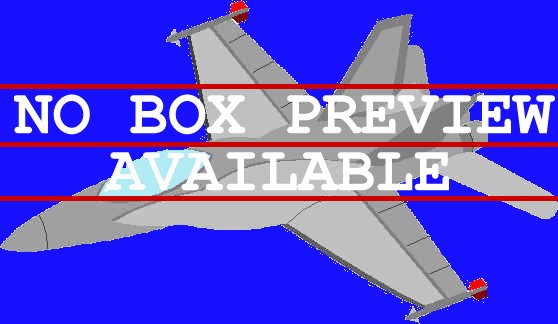
HASEGAWA 1:72 P-3C ORION UPDATE II

Reviewer: Myself (braithy@bigpond.com)
The P-3C Orion Update II version is currently in service with the Japanese Maritime Self Defense Force. The P-3C was purchased by the JMSDF to replace its ageing fleet of Trackers and Neptunes. The C Model included better electronic information processing systems than the earlier A & B models and is also in service with the RAAF and RNZAF. Further modernisation of the C Model by the JMSDF brought in the Update I, II and recently III versions.
In 1/72 scale the Orion is quite large and is well represented in this form by the size of its box. Four large sprues containing more than 100 nice and crisp injection mold parts are included in the box. A small sprue of about a dozen clear parts is also included featuring one-piece windscreen and various fuselage windows. Panel lines are engraved in what one would term as 'reasonable' detail - ie: nothing special - and the plastic parts are white in colour (good, that means only one or two coats of white paint will be needed for once!). Even in the box you can envisage just how big this model is going to be. Instructions are typical Hasegawa with just over half a dozen exploded assembly sketches, sprue diagrams (with non-used parts shaded) and colour call outs from Mr Color/Gunze Sangyo range.
Construction starts with the cockpit, which is actually a better representation than one has come to expect from this company. Includes nicely rendered control columns and seats (three), side instrument panel, instrument panel between pilot and co-pilot, the main console instrumentation and rear wall molded to look like a door would enter into the rear of the aircraft. The rest of the interior of the aircraft is completely absent, absolutely no internal detail in the rear cabin areas at all. This is somewhat annoying considering that the rear main entrance door to the interior of the aircraft can be positioned open! Any internal detail must be scratchbuilt. The instructions say to attach the fuselage windows in the last assembly step but I found it much easier to place them in now and ensure they were positioned correctly
The fuselage halves go together without drama, although a small gap needs to be filled at the join lines. The wings are split into two upper halves and a one-piece lower half. I assembled the wing before attaching to the fuselage - in the meantime I also attached the engine cowlings - and this again presented no real problems other than a little bit of filling at the roots. The tailplanes are also horizontally split into two halves and once placed on to the aircraft the whole exterior, other than MAD boom, nose and some small antennae, was more or less complete.
A fuselage door is provided along with a ladder that will enhance the look of your static model but the lack of an interior is one that will probably push you toward having a closed door (as I did). Testing the ladder in particular seemed to me that it did not reach down far enough as to make it believeable to be used by personnel. But without fitting I can't be completely sure. The undercarriage is quite nicely done in terms of accuracy and measures up well to reference material but there is a somewhat lack of wheel well detail to enhance it.
In the final stages you attach the nose (the kit also suggests 30g weight inside the nose to prevent tail sitting - I used about 32g without any problems), antennae and underwing pylons. For stores you get just two torpedoes and an ECM pod that are attached on three of the four pylons under the belly - there are also three pylons under each wing. The windows on the fuselage are attached in the last step and as pointed out before I actually added these in before the fuselage halves were joined - I'd recommend this although the windows are molded to fit on the outside. A small stand is also supplied that doesn't need to be glued to the aircraft because it helps to prevent any tailsitting - nice idea, but not required for me.
Three examples can be chosen from in the final wash up - all in JMSDF standard colours of Light Grey lower sides and fin, and upperside white. I finished mine in Satin (sort of a semi-gloss) appearance that suited the model very nicely. The three examples are 6th Sqn 4th Wing JMSDF featuring a dark blue figure with a club inside a light blue and yellow band, 3rd Sqn 4th Wing JMSDF featuring a red 'snow-topped' "A" depicting a mountain with alongisde a green up arrow depicting a tree, inside a three-striped horizontal dark blue and yellow band, and 2nd Sqn 2nd Wing JMSDF featuring a yellow horizontal pitchfork in a dark blue band plus horizontal blue and yellow fin tip band. The decals are nice and thin and conformed to the surface very well. The register is very good and there is plenty of stencilling supplied.
A very nice representation of the Orion and is very highly recommended to any JMSDF Orion buff. Fit of all the components was generally excellent and in spite of the number of parts and size of the model was actually quite a quick build comparitively. It's accuracy is pretty spot on and has captured the unique lines of the Orion splendidly. Two downsides are its complete lack of any internal detail and its very high price tag - I picked mine up in '92 on 'special' for $57Aud. Otherwise it would be a very very good model to purchase. Hasegawa have released other Orion versions with this same engineered mold and I would highly recommend getting your hands on one at the right price because it was a very good kit to make.
Back to home
Kit Review Index: 1/72
1/48